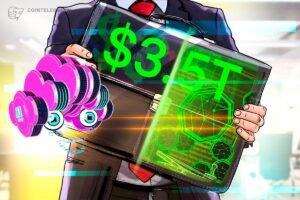Decentralized stablecoins are fully transparent, non-custodial with no or partial third-party control.
What Is a Decentralized Stablecoin?
A stablecoin is a digital asset built on the blockchain that is designed to maintain a price peg at a designated price, most often $1. This effectively removes holders from the swings of the market whilst providing a secure and stable way.
Stablecoins act as a mid-point between holding assets and withdrawing to the fiat system or are used as a more effective way of executing cross-border payments. Centralized stablecoins are usually fiat collateralized off-chain, usually directly connected to third-party custodians like a bank. Tether (USDT) and Coinbase’s USD Coin (USDC) are examples of centralized stablecoins. These stablecoins require you to trust that the third party has the corresponding dollars they issued.
Decentralized stablecoins are fully transparent, non-custodial with no or partial third-party control. All collateral-backing is visible to all as funds are on a publicly verified blockchain. This enables the stablecoin to be more trustless and secure with a single entity controlling the funds. They can be divided into two parts: crypto-collateralized and algorithmic.
Collateralized stablecoins can increase or decrease the supply manually, by minting or burning when required. Algorithmic stablecoins utilize smart contracts, or algorithmic markets operations controllers (AMOs), to automatically control the supply.
Author: Travis Moore, CTO of Frax
Bio: Travis Moore is an angel investor, programmer, entrepreneur, and the CTO of Frax, the world’s first fractional algorithmic stablecoin that is partially backed by collateral and stabilized algorithmically. Frax is open-source and permissionless, bringing a truly trustless, scalable, and stable asset to the future of decentralized finance. Moore is also co-founder of the blockchain-based knowledge base, Everipedia. Moore has a triple-major from UCLA in Neuroscience, Biochemistry, and Molecular, Cell, & Developmental Biology. His passions are artificial intelligence and blockchain technology, which he believes are the two industries that will impact the world the most in the coming decade.
Back to Glossary Index Page



